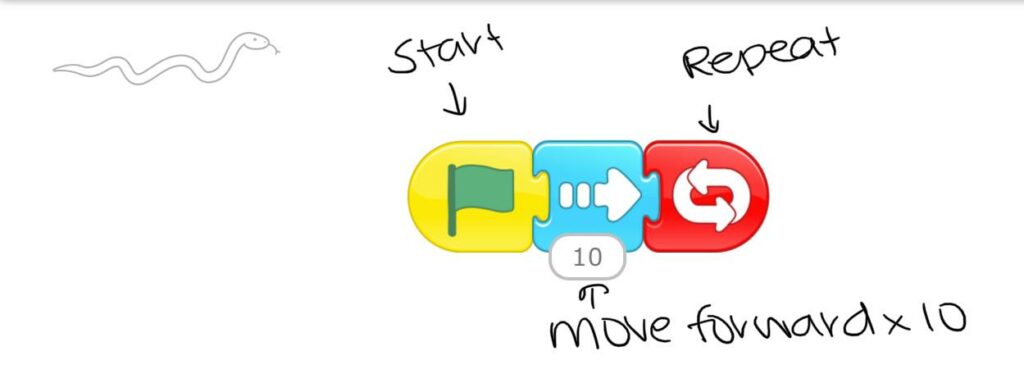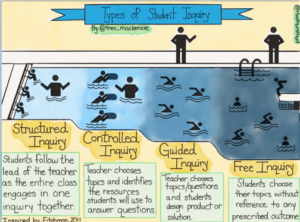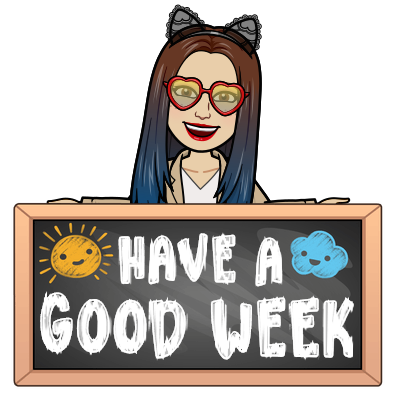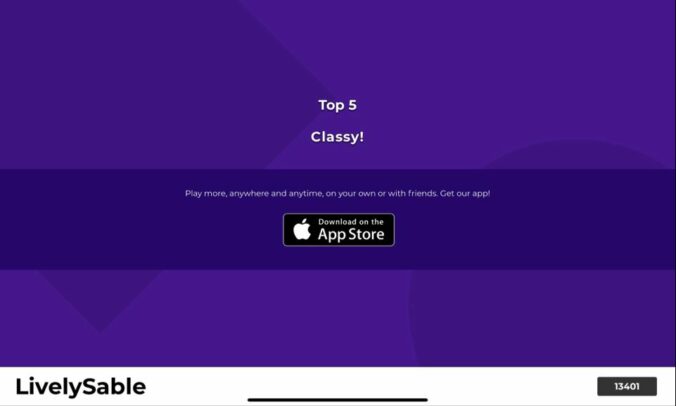Tag: EDCI336 (Page 1 of 3)
A subtle flex in to end off the reflections 😎
This week in class we talked about gaming and the impact it can have on a classroom. I am quite familiar with gaming in classrooms. When I was growing up, my school had a computer room filled with computers where people would play different games such as Cool math games, Fantage (which has unfortunately now been shut down), and Minecraft amongst others. These games showed me the concepts of money and were used cross-curricularly with other subjects. A few times, my class was allowed to use different games as projects; here are a couple things we did:
- Minecraft
- In my grade seven class, we learned about ancient civilizations. We got into groups and would have to make a presentation on one of the topics the teacher chose for us. While I never used Minecraft myself, a couple of the groups decided to build the ancient civilization completely on Minecraft and then gave us a tour for their presentation. This was really cool since I had never seen Minecraft before. Using this platform, the group was able to show us how the civilization worked and some of the architecture they would have used.
- Kahoot! and Jeopardy
- When I was in grade eight, my science teacher allowed us to create Kahoot or Jeopardy games for the class to get bonus marks. This was cool since we were using Kahoot when it had first come out (2013). I remember one day in class, the game completely crashed and only said “Secret Classroom Superhero?” on all of the devices. It is interesting to compare with where Kahoot is at now and see how it has evolved. We were also allowed to create Jeopardy games, which included filling in a PowerPoint template. These games were used frequently throughout my high school experience, especially in later science and history classes.
- Another fun memory involving Jeopardy is in my grade 12 year, the physics class challenged my history class to a Jeopardy game. We got to go head to head against the class and it was a lot of fun.
- Quizlet
- When I was peer-tutoring a french class in grade eleven, the teacher would use Quizlet to run a trivia game for the class. She would create a set of flashcards and then use them to challenge the class in a memory game. This was useful since students could use the flashcards to review after the game was over.
This week, we participated in an edcamp! This was exciting since I had never been to an education event with this many people before. While I was there, I got to attend different sessions that will help me in my future as an educator. The three sessions I got to listen to were getting ready for the first practicum, Indigenizing the classroom, and mental health in the classroom.
During the practicum talk, I learned a lot from different educators on what they believe we should do on a practicum. Some of this advice was obvious, such as have fun or plan ahead. But I also learned some things I would have never thought about. For example, one of the suggestions was to keep a day book. This will help me in the end since I will be able to remember what happened within the class and how I handled it. I can also reflect in the book and talk about what I wish happened. This idea will come in handy if I ever have a job interview or need to reflect when I get my own classroom in the future. I also learned a bit about authority within a classroom. The only time I have been in the classroom in the past is on my Wednesday visits last semester. Other than that, my only experiences with children have been in summer camps. This differs from the role of the teacher since although you are still an authority figure in summer camps, your job is to allow the children to have fun and stay safe. When you are the teacher, you need to ensure the students still have fun and keep safe, but also that they are learning and getting a good education. There also has to be boundaries set with the students to ensure there is classroom management and that the day runs smoothly.
In the Indigenizing education section, one of the people in the breakout room discussed how we can include the First People’s prinicples into our classrooms. What I found most interesting, is that they told the students the principle and had them connect it to what they were learning. I assumed that since it was a guideline in the class, we would not tell students which principle we were covering and that it would just be for our knowledge as teachers. However, they said that we should tell the children the principle and allow them to make meaning from it. The people in the breakout room also agreed that teachers should explain the principles to their students since they cannot talk about what they do not understand.
Finally, the last session I joined was the mental health group. Here I learned a little more about project-based learning (PBL). I did not spend much time in this group, but, I learned that inquiry can be good for a student’s mental health since they are able to learn about what they want in a method that works for them. When students are more independent, they will get a rush of dopamine since they feel accomplished with the work they completed by themselves.
Edcamp was great and I would love to join in for another section someday. It is interesting since I thought it would be a lot more formal than it was. I would love to attend a session in person, that way, I would get to meet a lot of new people and experience how edcamps work in-person.
When I was in elementary school, I never used coding so this is completely new to me. In high school, I remember a couple of my friends got pulled out of class to do a coding workshop where they played a game using Barbie; I always thought that was cool.
I think coding is a great thing to teach in schools. As the world becomes more technological, the more code is being used. If coding is being taught in elementary school, there are more chances that students will be interested in learning more about code and considering it as a future profession. Especially, if coding is taught to girls, we might have more women in STEM.
While exploring code during class time, I joined the Scratch JR. group. I was able to download the app on my iPad and create a little scene with different characters. It was very confusing at first. I did not understand what was going on and just kept on making random patterns for the character to follow. However, as I started exploring the app, I found examples that were much more sophisticated than mine. I looked at how they coded the journey of the character and figured out what some of the buttons meant.



With the emergence of online education arising because of the pandemic, distributed learning is more important than ever. Although all of my classes this semester are synchronous (all the participants are completing the activities at the same time) a lot of my friends are completing their lectures asynchronously (participants participate at different times in different locations). I have done both styles of learning, so I know there are pros and cons to each type; such as in asynchronous classes, the students can plan their class schedule around their work schedule instead of the opposite.
It is interesting to see how many different ways there are to meet now. It is almost impossible to avoid someone since there are so many different ways people can communicate. An example that comes to mind for me is that next year when classes are in-person, it will be harder to have snow days where school is cancelled since everyone will be able to log onto a zoom call and access the lecture from their homes.
Although I have mostly used zoom and MS Teams to schedule meetings this year, it is interesting to see all the options that are out there. Such as the Gathered Town, where you can get together with 20 friends and walk into someone to start a face-to-face conversation with them, just like in ‘real-life’.

Finally, we talked a bit about Pedagogy vs. Modality. Many people say that online classes are less engaging since they are online, however, that is untrue. It depends entirely on the pedagogy the teacher uses. For example, last year I fell asleep during a history class which was in-person; however, I was completely engaged within a different history class last semester. Depending on how the teacher teaches influences whether the class will be engaging.
Inclusion and exclusion is something I am worried about as a future teacher. Of course I want all of the students in my class to feel like they belong, but I do not know how to incorporate that sense of belonging. This is why Tracy Humphrey’s talk was so useful to me. It was nice to have her come in and speak to the class since she had first-hand experience as a mother in a situation where her son’s needs were not being met. It was also interesting since she is the founder of BCEDACCESS, which will be a helpful resource for when I am a teacher.
What was really beneficial was the process behind helping students and their parents advocate for themselves within a school district. As Tracy mentioned, the start of a complaint with the school is with the teacher, so it is important for us to follow the right steps and go the extra mile to have inclusive classrooms.
Some ways I can help parents and students with their advocacy:
- Writing down examples. By putting information down in writing, there is proof that a student’s needs are not being met. This will help them advocate since you can bring in real-life examples of when a situation occured.
- Follow-up. If a parent has concerns, don’t wait for the school to follow-up with the parent to ensure everything is going well. Have a conversation with the parents to make sure their child has everything they need and that their needs are being met.
- Collaborate with families. If the teacher has a relationship with a family, it becomes easier to talk to parents about what their children need and makes the teacher more approachable. Sometimes, the parents might not even know anything is wrong. This would be a much easier conversation to have if there was a relationship formed.
What really surprised me during this lecture was the statistic that 133 million girls are not attending school right now, this includes disabled girls in BC. When I think of girls not being able to attend school, I think of third-world countries where families may need the extra support from their daughters at home. I never thought that this would include girls within my own province. By creating a conversation on inclusive education, we are potentially opening the door for many more girls to go to school in the future, with classrooms ready to support them.

Week Eight
This week we talked about using videos in education. I am no stranger to teachers using videos to help me learn and me finding videos to help teach me. Throughout high school, I would sit through at least one video a day from teachers that thought it would help me learn better (which it did). Videos are especially useful in class to show us processes or experiences we wouldn’t normally see. For example, in my Biology 12 class, the teacher used videos to help us see what DNA and RNA looked like. Without these videos, I wouldn’t be able to see how these two structures function.
On the other hand, I have also used videos to help me learn independantly. In my psychology class last year, I would often watch the CrashCourse video on the lesson we had just learned so I could go over the terms in simpler language. This helped me retain the information since Hank Green added animations and jokes that helped the memory stick in my brain.
We also talked about GIFs in this lecture. GIFs are some of my favourite things to add to projects since they are so much more expressive than a picture. They are also useful when I talk to my friends. I can send them a GIF of my exact reaction to their text message, that is more expressive than an emoji.
I have made a lot of videos throughout my life and have recently started getting into iMovie editing. For this class, I have made a video of me using different French words:
Also for this class, I made a timelapse video of me creating a friendship pin. This was done with the timelapse effect on my iPhone.
This week, Jeff Hopkins came and talked to our class about his school for inquiry learning (Pacific School of Innovation and Inquiry (PSII)). Inquiry is something that I want to explore when I become a teacher, so I am grateful for the experience of hearing Jeff talk.
What I found especially interesting, was the tour of Jeff’s school:
I found this video interesting for a multitude of reasons. Firstly, it was filmed using a special camera that allows the viewers to get a 360 view of the space. This was really interesting since I rarely see videos filmed this way. It really elavated the tour and gave me a sense of the space they have, which I normally wouldn’t get unless I was in-person.
I also found the spaces really interesting. The lab in paritcular, was designed like a unicersity lab where the students can follow along with the instructor. I found this interesting since I was able to relate this to the GRR model of learning. Although the experience is guided, the student still has a lot of independance within the activities. As Trevor Mackenzie said a couple weeks ago, students cannot just be thrown into inquiry. Instead they need to be taught and guided so they know how the process works.
I also noticed within the tour, there were lots of spots for students to collaborate with each other. Although it was limited, due to COVID, they still had spaces where students could go and work together on an assignment or go on a zoom call together. Part of learning is learning with and from other people you are with, I love how much collaboration this school has so people can inquire and rely on each other.
Although I wish we got an in-person tour, I am glad that I still got to see this 360 tour of the school. Once COVID is over, I would love to go into the school and experience it in person if I am able to. I love the dynamic and how they are learning through inquiry, which is something other schools are just starting to incorporate.
As for the screencast video, in the past, I created a video for my PE class where I had to present my lesson plan, so I am fairly familiar with the process of recording. I typically record mine over zoom, but would love to try it your way as well.
This week, Trevor Mackenzie came into our class and talked about Inquiry. This was interesting to me since towards the end of high school, I started to get tasked with more and more inquiry projects. I love inquiry since it focuses on the students’ interests and builds their intrinsic motivation to learn. I appreciated Trevor’s lecture since he explained all the different types of inquiry, as well as allowing us to reflect on what we already know/would like to know in the future. I also appreciated how Trevor said we could use Bitmojis of all the students to gauge where they are at with the material since I love my Bitmoji (Pictured below).
I also love Trevor’s pool graphic and have been thinking about how he said don’t push students in the deep end since he has come to talk. Whenever I thought of inquiry, I assumed that it was student-led and relied very little on the teacher. However, through Trevor’s talk, I learned that inquiry can still exist if it is guided by the teacher. In the past, I only knew about Free Inquiry. However, I have now learned that there are three other types: structured inquiry, controlled inquiry, and guided inquiry. I will be sure to include these in my future classroom since I know what it is like to drown in the deep end.




